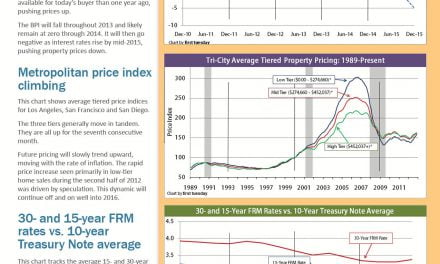See all new real estate laws passed in the 2011-2012 state and 2011 federal legislative sessions.
Topics:
- Notice required to prohibit smoking in residential rentals
- Public agency’s authority to finance and construct public sewer systems revised and defined
- Electrical vehicle charging station installation and use in a CID defined
Reported by Mary Balash
This law establishes notice requirements for landlords prohibiting smoking on residential properties.
Notice required to prohibit smoking in residential rentals
California Civil Code 1947.5
Added by S.B. No. 332
Effective: January 1, 2012
Landlords may now prohibit smoking in both the internal and external areas of residential rental properties.
To prohibit smoking under rental or lease agreements entered into on or after January 1, 2012, landlords are required to include a provision in the lease agreement specifying the areas on the property where smoking is prohibited.
To prohibit smoking under existing rental or lease agreements (entered into before January 1, 2012), the landlord must notify tenants by delivering a written 30-day notice of change of terms.
The smoking prohibition does not affect any other terms or conditions of a tenant’s rental or lease agreement.
Related forms: first tuesday Form 550 – Residential Lease Agreement; first tuesday Form 551 – Residential Rental Agreement (Month to Month); first tuesday Form 570 – Notice of Change in Rental Terms
This legislation amends the payment period and interest rate on a public agency’s financing for the construction or improvement of public sewer systems and specifies the purposes for which the public agency may exercise its authority over public sewer systems.
Public agency’s authority to finance and construct public sewer systems revised and defined
California Health & Safety Code §5464, 5465
Amended by A.B. 741
Effective: January 1, 2012
The period which a public agency is given to pay for the costs to construct or improve public sewer systems has been extended from 15 years to 30 years. The interest rate charged to a public agency on the unpaid balance of those costs has been increased from 6% to 12%.
The public agency has the authority to finance and order the construction or improvement of public sewer systems regardless of whether discharge or contamination has occurred. The agency may exercise this authority only for the following purposes:
- to connect a property which has an onsite septic system to the public sewer system (costs cover but are not limited to pipes, pumps, other equipment, septic system abandonment and associated sewage treatment); or
- to replace or repair existing sewer system laterals which connect the pipes to the public sewer system (cost of replacement or repair will be the same as the cost to connect a pipe to the public sewer system).
The following definitions apply in this section:
- “Assessment district” is an improvement district or area served by the public sewer system;
- “Government board” and “governing body” is the governing body of the public agency; and
- “Ordinance” is a resolution.
Editor’s note – The public agency is defined as an entity, which includes counties, cities and counties, cities, sanitary districts, county sanitation districts, county service areas, sewer maintenance districts and other public corporations and districts authorized to acquire, construct, maintain and operate sanitary sewers and sewerage systems. [Calif. Health & Safety Code §5470]
This new law regulates the responsibilities of homeowners’ associations (HOAs) and homeowners on the installation and use of electrical vehicle charging stations in common interest developments (CIDs).
Electrical vehicle charging station installation and use in a CID defined
California Civil Code §1353.9
Added by S.B. 209
Effective: January 1, 2012
The covenants, conditions and restrictions (CC&Rs) for a common interest development (CID) may not effectively prohibit or restrict the installation or use of an electrical vehicle charging station (station) in the CID.
CC&Rs may however place reasonable restrictions on a station, providing the restrictions do not significantly increase the station’s cost or significantly decrease the station’s efficiency or performance.
If the installation or use of a station requires approval, the CID’s homeowners’ association (HOA) must consider the application for approval in the same manner the HOA would consider an application for architectural modification to the CID. The HOA’s approval or denial of the application must be in writing. If the HOA fails to deny the application in writing within 60 days from the receipt date of the application, the application will be considered approved (unless the delay is due to the HOA’s reasonable request for more information).
The following provisions apply if the station is in a common area or an exclusive use common area:
1. A homeowner must obtain the CID’s approval to install a station and the CID must approve the installation if the homeowner agrees in writing to:
- comply with the CID’s architectural standards for station installation;
- employ a licensed contractor for the installation;
- within 14 days of approval, provide an insurance certificate which insures the CID under the homeowner’s insurance policy; and
- pay for the station’s electricity costs.
2. The homeowner and each successive homeowner of the station’s parking stall is responsible for:
- costs for damage to the station or areas common or adjacent which result from work done on the station;
- costs for work done on the station until it is removed from the common area;
- costs for electricity; and
- disclosure to prospective buyers of the station’s existence and the responsibilities associated with the station.
3. The homeowner and each successive homeowner must at all times maintain an umbrella liability coverage policy of $1,000,000 which insures the CID and covers the homeowner’s responsibilities defined in the provision above, with a right to notice of cancellation.
An HOA which violates this new law will be liable for actual money losses and pay a civil penalty of no more than $1,000.
Editor’s note – The duty of the homeowner described in the second provision above to disclose the station to prospective buyers is best fulfilled with the Transfer Disclosure Statement (TDS). The TDS represents, to the best of the seller’s knowledge, the conditions of the property.
Related forms: first tuesday Form: 304 Condition of Property – Transfer Disclosure Statement (TDS)














